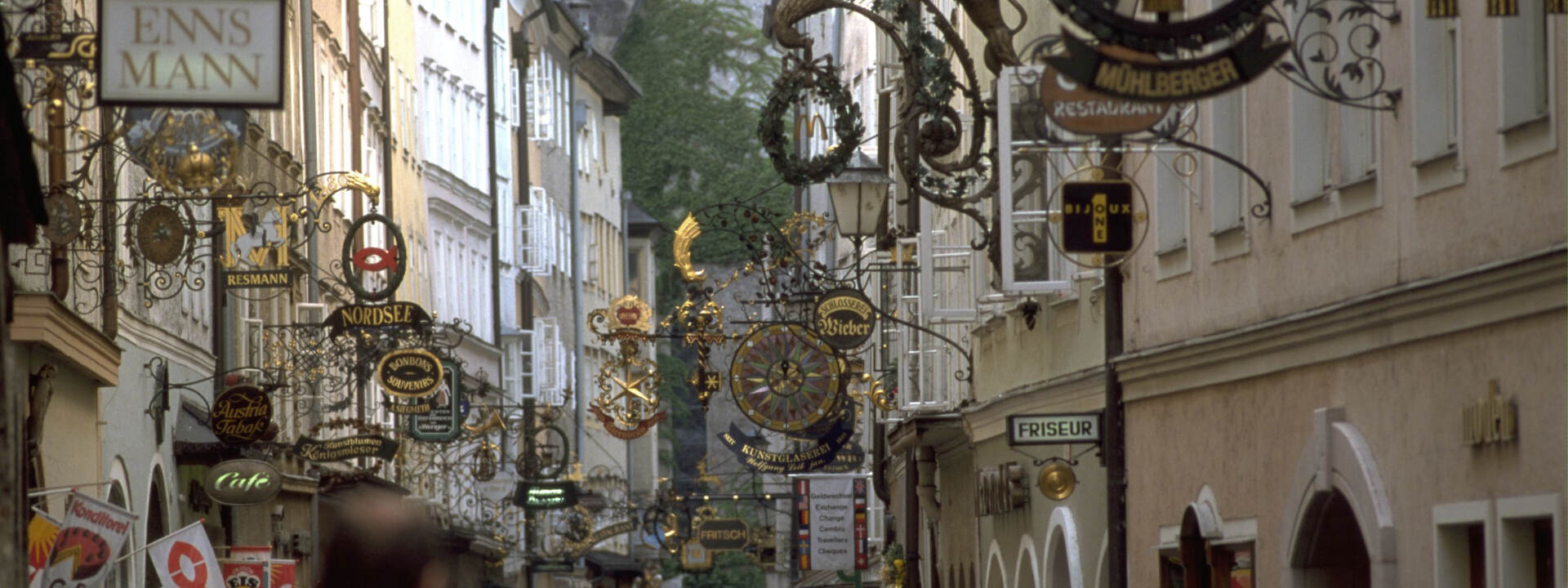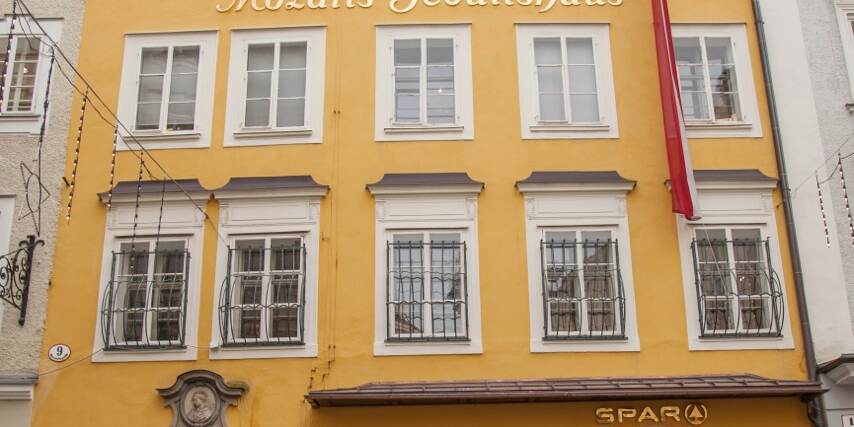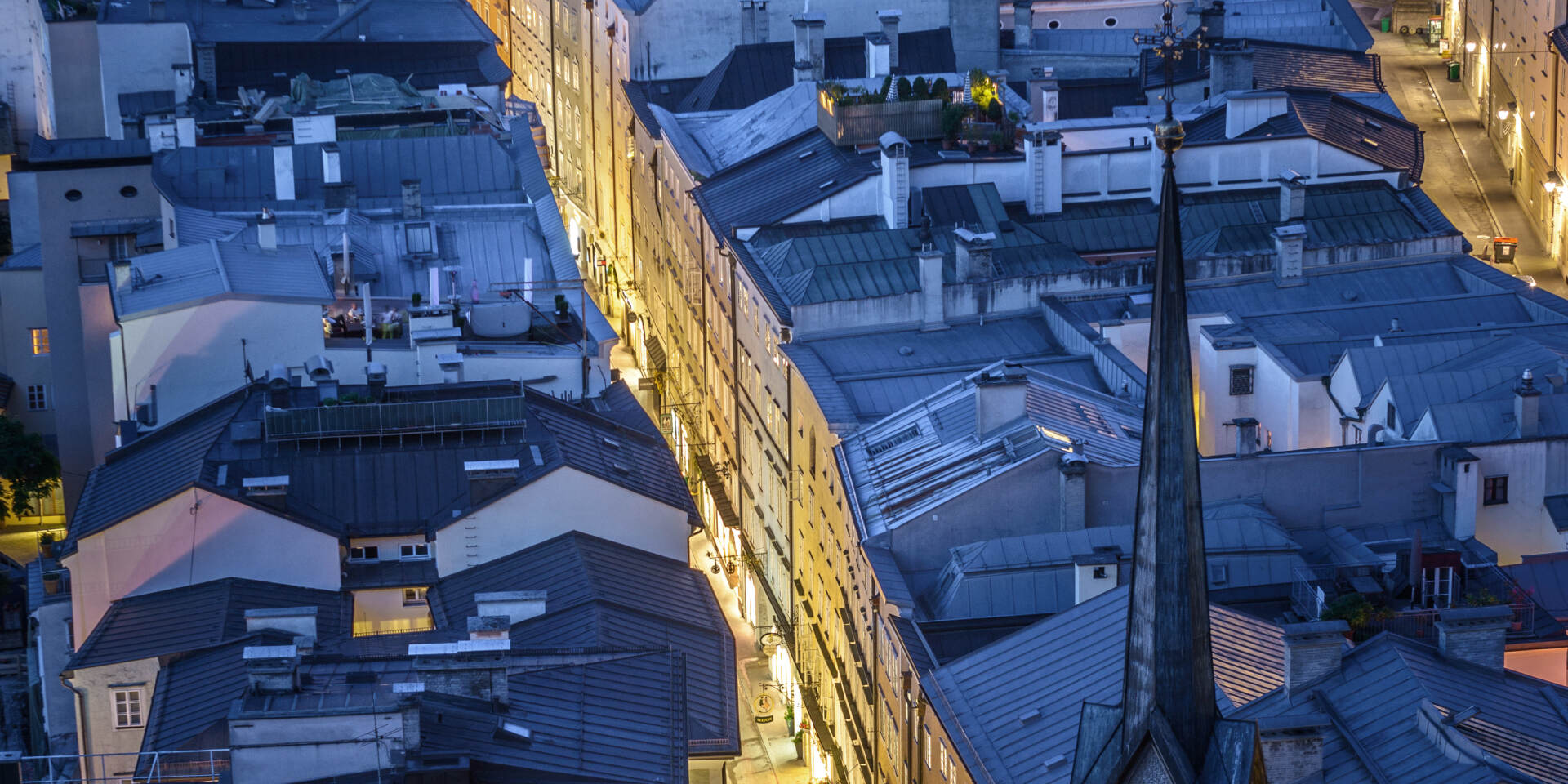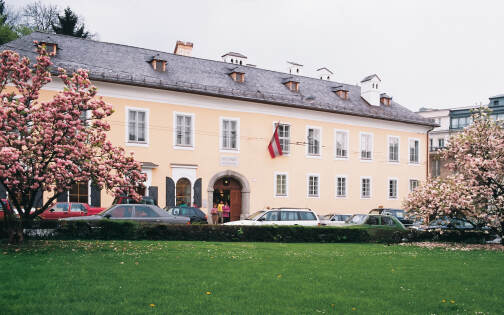
The Getreidegasse in Salzburg
Stroll through the famous Getreidegasse in Salzburg!
The Getreidegasse is not only known as a shopping street but also for its history-steeped atmosphere with its wrought-iron guild symbols and passageways.
Discover the Getreidegasse and other highlights of Salzburg in 48 hours.
History of the Getreidegasse
As early as the Roman Age the Getreidegasse was an important route through the city of Salzburg towards Bavaria. It was first mentioned in a document in 1150 – however still under the name “Trabgasse”.
Over the course of several centuries, the Getreidegasse was expanded as far as the city’s fortification, the river Salzach and land ownership allowed. The Getreidegasse had always a place of trade and wealth. Trading houses, apothecaries, craft businesses, breweries and taverns were run here. The tall and narrow townhouses belonged to city councilmen, officials, judges and minters.
The most notable house of the Getreidegasse is certainly Mozart’s Birth Place. The composer was born here in 1756 and lived in the house at the Hagenauer square for the first 17 years of his life.

The curious name of the Getreidegasse
„Getreidegasse“ literally translates to “grain alley”. However, unlike the name would suggest the Getreidegasse has nothing to do with grain. Initially, the Getreidegasse’s name was “Trabgasse”. The word stems from the dialect word “trabig” which means “being in a hurry”. Over time, “trabig” changed and became “trav”, “traid” and eventually “Getreidegasse”.

Architecture
A special architectural feature of the Getreidegasse are the many houses with public passageways on the ground floor. These passages connect the Getreidegasse with the Griesgasse and with the university square, respectively. Some of these passageways have become shopping arcades and allow access to courtyards with many historical remains, like crests, inscriptions, columns, archways, reliefs, …
During earlier centuries, the Getreidegasse was cleaned of dirt and waste every Saturday evening and before every holiday. This was done by flooding the entire alley with water from the Alm channel and draining it into the river Salzach.
On many houses there are the inscriptions of the names of previous owners, painted God’s Eyes or wrought-iron guild signs to be discovered. Keep your eyes open!
Explore many other things you can do in Salzburg!

